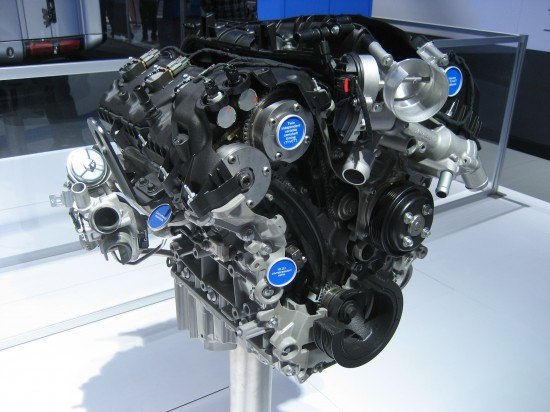QOTD: Are V6 Powered Full-Size Trucks Hitting Critical Mass?
Even though Ford Ranger is dearly missed, Ford is claiming that Ranger customers are content with upgrading to an F-150 with one of Ford’s V6 powerplants – and they’re hardly alone in opting for the smaller powerplant.
Automotive News reports that the V6 powered F-150 has achieved a majority
F-150s equipped with V-6 engines, rather than V-8s, accounted for 53 percent of the 2012 sales total, a rate that exceeded Ford’s expectations.
The revival of the Ford Ranger has gotten plenty of attention this week, after an article by TTAC alum Justin Berkowitz shed light on the possibility of a compact, unibody pickup slotting below the F-Series. Whether or not this truck even comes to the USA is another matter.
What’s most compelling is the shift to a V6 engine in a segment where anything less than a V8 was seen as an emasculating choice. Even Ford was apparently caught out by the strong demand for the V6 engines. One source tells us that Ford initially expected a take rate of 15 percent for the Ecoboost, and hustled to meet demand when the real take rate ended up at around 40 percent or more.
Even though GM has downplayed the V6 option on their upcoming Silverado and Sierra trucks, Ram has been relentless in touting the new Pentastar V6 on the new Ram 1500. It will be interesting to get the data on Pentastar take rates once the redesigned Ram has had a full year of sales. The Ecoboost has the “urination contest” advantage of having two turbochargers and a lot more torque than competitive V6 and V8 engines, which may take some of the sting out of not having the two extra cylinders. Lest we forget that the emotional factor is frequently in play when choosing any car, and full-size trucks are no exception. The base 3.7L may be the prudent choice if fuel efficiency and saving money are the priorities – but as its minimal take rate demonstrates, the macho factor is still what’s important.
More by Derek Kreindler
Latest Car Reviews
Read moreLatest Product Reviews
Read moreRecent Comments
- Jkross22 When I think about products that I buy that are of the highest quality or are of great value, I have no idea if they are made as a whole or in parts by unionized employees. As a customer, that's really all I care about. When I think about services I receive from unionized and non-unionized employees, it varies from C- to F levels of service. Will unionizing make the cars better or worse?
- Namesakeone I think it's the age old conundrum: Every company (or industry) wants every other one to pay its workers well; well-paid workers make great customers. But nobody wants to pay their own workers well; that would eat into profits. So instead of what Henry Ford (the first) did over a century ago, we will have a lot of companies copying Nike in the 1980s: third-world employees (with a few highly-paid celebrity athlete endorsers) selling overpriced products to upper-middle-class Americans (with a few urban street youths willing to literally kill for that product), until there are no more upper-middle-class Americans left.
- ToolGuy I was challenged by Tim's incisive opinion, but thankfully Jeff's multiple vanilla truisms have set me straight. Or something. 😉
- ChristianWimmer The body kit modifications ruined it for me.
- ToolGuy "I have my stance -- I won't prejudice the commentariat by sharing it."• Like Tim, I have my opinion and it is perfect and above reproach (as long as I keep it to myself). I would hate to share it with the world and risk having someone critique it. LOL.


































Comments
Join the conversation
@danio3834 The Ford Ranger and Nissan Navara are almost the same prices for similary spec'd vehicles here. What I'm trying to point out to you is the price of a Navara here and a similar vehicle in the US. I'm not comparing vehicles. Our top end Navara is over $64 000USD a little more than a top of the line Ford Ranger. End of story???? http://www.caradvice.com.au/159027/2012-nissan-navara-on-sale/
Anybody plow snow with these, other than a residential driveway?